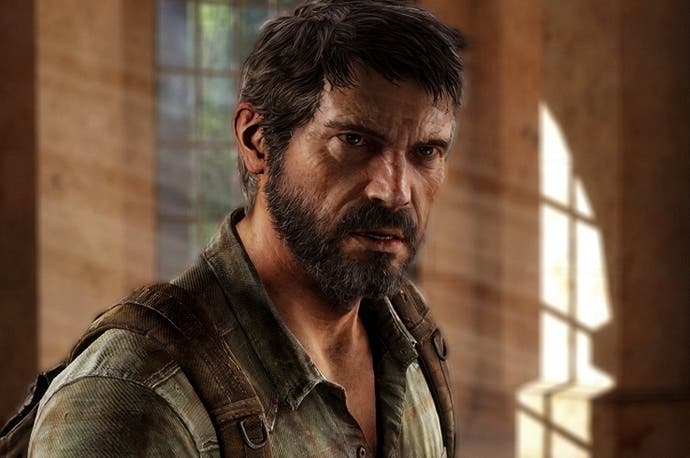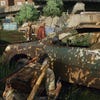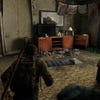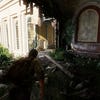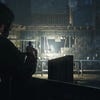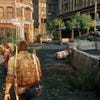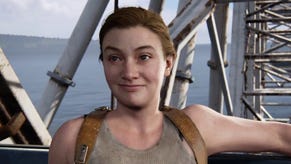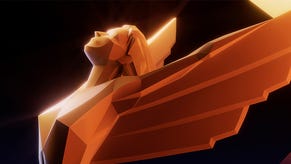Tech Analysis: The Last of Us
Next-gen now?
The next generation of consoles is almost upon us, and many people are looking to the new hardware to deliver a huge leap in graphical quality. Before that happens though, Naughty Dog has taken one final run at the PlayStation 3, hoping to extract the last few drops of power from the system and produce one of the console's defining games.
From a graphical perspective, of course, the truth is that once you reach the end of a console cycle it becomes harder to make the same dramatic graphical gains found in previous titles. The "evolution not revolution" approach of Naughty Dog's own Uncharted 3 is a good case in point.
Indeed, while our brief look at the demo of The Last of Us showed some noticeable engine changes over Uncharted 3 - with improvements in lighting and animation standing out particularly - the enhanced tech comes at a cost: a noticeable impact on performance, with frame-rates buckling under pressure during demanding scenes.
Despite this, it's clear that the overall experience is very different to anything Naughty Dog has done before, and the result is a promising concept that is fully realised in the finished game. What is particularly interesting is how the developers have adapted the technology to create a vastly different world in The Last of Us while still retaining their trademark art style and keen eye for detail. The use of lighting, post-processing and environmental effects are all more fleshed out than previous titles.
The locations featured throughout The Last of Us are beautifully rendered, rich in detail but at the same time they are also harsh, foreboding places, ravaged by chaos, with nature in the process of reclaiming urban environments. The opening few hours of the game are deliberately slow, played out at a careful pace; there are a few frantic highs, but it's mostly centred on giving players freedom to soak up the desolate feel of the surroundings they're exploring.
"The rich detail, phenomenal effects work and brilliant artistic direction define the level of accomplishment in The Last of Us. It's a beautiful game."
Nuanced detail
It's here where the refinements to the engine become apparent. Environments appear more expansive than those of the Uncharted games, and the level of detail is impressive for a current-gen game: throughout the bleak landscapes we see weeds growing through cracked pavement in run-down towns and cities, with rubbish strewn across the floor and paint peeling off the walls of slowly eroding buildings. City streets are overgrown and partially flooded, while the sight of cars piled up on the freeway gives us a fading glimpse of the panic that set in as society fell apart. Post-processing is also used in combination with alpha-based transparency effects to simulate dust particles and floating fungal spores, layering on another level of atmosphere.
The characters are given a similar level of attention. Close-ups reveal wrinkles and fine blemishes in Joel and Ellie's skin, layered hair, along with folds in clothes and other nuances. One of the game's biggest achievements is that these characters look and feel as though they've been weathered and beaten by the surrounding horror.
The Last of Us is also unrivalled in terms of its emotional portrayals: facial muscle simulations - using what looks like animated normal maps and an underlying bone structure - reveal a range of expressions that convey feelings with great subtlety. Even small changes such as eye movements are rendered with unrelenting accuracy. Emphasis on such minuscule details really make Ellie, Joel and the supporting cast feel alive and responsive, especially when they play off of each other as events occur around them.
So far, it's all genuinely impressive stuff, especially given the limited memory and processing power on tap in the PlayStation 3 compared to what is available even in today's budget gaming PCs, not to mention the upcoming PS4 and Xbox One. Naughty Dog manages to redefine what is possible on the PS3 without too many trade-offs in other areas of the game.
"The Last of Us is unrivalled in terms of its portrayal of emotion, thanks in no small part to state-of-the-art facial muscle simulation."
Image quality is also very good. Rendering natively in 720p, the post-process anti-aliasing solution delivers slightly better coverage across the scene compared to the implementation used in Uncharted 3, while textures are also nicely filtered, although they do tend to blur when viewed from certain angles. With that said, the high level of graphical quality is occasionally let down by visibly low-resolution textures, shimmering across long edges and sub-pixel details on more complex scenery. Alpha buffers, reflections and depth-of-field are also rendered in low resolution, leading to the jagged appearance of geometry edges when these elements intersect with characters and parts of the scenery.
Perhaps due to the level of detail on offer in the environments, we also never see the same kind of large-scale set-pieces that helped define the Uncharted titles. Instead Naughty Dog appears to have traded down on the scale of the action to realise larger and more lavish environments while managing overall performance. It's mostly successful in this, too, although the exhaustive range of visual effects, lighting, AI and gameplay sub-systems clearly affects the overall fluidity of the experience.
The Last of Us: performance analysis
In the demo we saw how fight sequences and the appearance of multiple light sources caused frame-rates to stray from the desired 30fps target. While this was never an issue when slowly exploring the environment, during fast-paced combat scenes the ebb and flow of the controls is far more important, and it's here where we felt the mild judder and visible loss in smoothness could impact the experience when the engine is more heavily taxed - particularly during gunfights where accuracy is desired to make every last bullet count.
"Adding to Uncharted's technological arsenal comes at a cost - frame-rate does suffer in comparison to Drake's latter adventures on PS3."
For the most part things haven't changed in the final game: more technically demanding scenes still cause the frame-rate to buckle under the rendering load, although we find that heavier drops in performance have a greater impact on the action when it is situated in larger, more expansive environments. It's not uncommon to see drops of around 5fps - sometimes more - when traversing areas that feature large amounts of foliage and reflective water.
However, a lot of the time this isn't a real issue because it happens during slower-paced segments of the game designed to allow the player to take stock of their surroundings or soak up the storytelling. The clever use of depth-of-field and object blur helps to disguise these deficiencies, too, as does the game's focus on avoiding direct confrontation with bandits and the infected.
It's also fair to say that The Last of Us is placing serious demands on the PS3 hardware, and at times we get the feeling the console is struggling to keep up with the engine's strict v-sync to prevent tearing. The use of triple buffering ensures that not a single frame is ever torn - for every frame rendered one is held in reserve, keeping image consistency solidly intact. The downside is that this technique creates additional input lag, and fire-fights feel a little heavier as a result, with a bit more time required to get into cover and take aim.
"When the action fully breaks out, the engine has a much better time of dealing with the rendering load in more confined locations where the multiple enemies are much less of an issue."
Despite the sometimes variable frame-rate during stand-offs, however, The Last of Us never becomes remotely unplayable, and the fact the player is given so many choices in each situation means a noticeable drop in smoothness in the most intense scenes isn't as damaging as it would be in other games. Switching to melee combat is more forgiving, and in many ways does a better job emphasising the feeling of survival when the odds are stacked against you.
Lighting, animation and AI: the key to realism
While there is a hit to performance, it feels like a worthy trade when the pay-off is such beguiling new technology, and one area where The Last of Us truly excels in this regard is its focus on ambient lighting.
In this post-apocalyptic world, electricity is almost entirely absent: the sun is the main source of illumination for environments in the game, which are mostly lit and shaded indirectly when venturing inside buildings and going underground. Naughty Dog employs a distinct global illumination system that replicates the effect of sunlight bouncing around the environment, providing subtle variations in the way locations are lit and shaded. Direct light sources - the sun, torches and gunfire - are rendered dynamically in real-time, casting their own shadows, while secondary and ambient lights are achieved via baking (pre-calculating) these elements into the environments using dynamic light maps. The end result is that locations appear natural and contain plenty of depth.
We also see changes in exposure, bloom and intensity taking place when moving from indoors to the outside world, showing off the high dynamic range (HDR) lighting along with other nice touches such as the use of light shafts, lens flare and depth-of-field - the latter simulating how the human eye refocuses when looking directly at the sun. Characters also cast indirect shadows that accurately display a silhouette against nearby surroundings, instead of the glowing black halos we usually see with SSAO (screen-space ambient occlusion).
"The extensive use of ambient and dynamic light sources is something we'd expect from PS4, but Naughty Dog manages to pull it off well on current-gen hardware with only a few side effects."
The extensive use of ambient and dynamic light sources is something we'd expect from a PlayStation 4 game, but Naughty Dog manages to pull it off well on current-gen hardware with only a few side effects: poorly filtered shadows cast by the sun can be unsightly up close, revealing that PCF and cascade transitions are still being used for performance reasons, while only characters appear to cast accurate indirect shadows. But despite this, the way both environments and characters are illuminated is used to great effect throughout the game.
Another element that stands out is just how well the characters sit in the world Naughty Dog has created, and indeed interact with it. The way Ellie and Joel move across their surroundings is incredibly nuanced, with lots of small touches that would usually be ignored. The developer's custom animation system, which blends individual motion-captured movements into realistic actions, has been further refined. The blending of different animations is much smoother than in Uncharted 3 and the end result is that transitions between individual movements - where visible - flow far more naturally.
Animation in The Last of Us is context-sensitive too: SPU ray-casting calculates which animations to use in any given scene to determine how characters interact with their surroundings - such as the way Joel steps over a pile of rubble while walking, or how he uses a nearby table or pillar to smash the skull of an infected during combat. Similarly, as the player explores the environment, characters also react to the events happening around them in various ways: Ellie might look away or cover her face in the presence of bright lights (like a torch shining in her direction) or she may become startled as you fire your weapon.
During combat, Ellie - along with other allies - will also attack enemies with objects found nearby, grapple them during a fight and throw you ammo retrieved from downed corpses. This adds a dynamic feel to the game in that no two encounters play exactly the same way - characters seem more alive and less like scripted computer-generated avatars, while the enemy AI reacts differently to each situation depending on what the player does. Enemies deviate from their search patterns to investigate noises, duck for cover and flank the player during combat, often falling back and finding another way to get the drop on you - mainly via exiting and re-entering the room from another entrance.
The infected are a bit more mindless, but still display a few nuances of their own. The clickers - who are blind - can be distracted by sound, but are also sensitive to the player's footsteps, while runners race towards the players erratically, making them harder to defeat at close range.
"AI is a step beyond Uncharted. Characters seem more alive and less like scripted computer-generated avatars, while the enemies react differently to each situation depending on what the player does."
The AI isn't completely infallible, mind you. Human foes are sometimes slow to respond after a neighbouring enemy has been silently shot down right next to them, while in some locations pockets of infected stand in set positions waiting for the player to get their attention - the latter is clearly designed to create designated challenges for the player, but it also breaks the illusion of dynamic AI found elsewhere, often in the same environment.
There are also moments where Ellie and the other members of the supporting cast get in the way when moving through small spaces. Such flaws rarely if ever get in the way of the game, at least - they just come across as a minor blip in what is otherwise highly polished and well-balanced gameplay. The way Ellie and Joel frequently interact with each other and the world around them is a distinct high point.
The Last of Us: the Digital Foundry verdict
"The recent announcement that an enhanced version of the engine used to create The Last of Us will be used to power the studio's PS4 titles should come as no surprise. Cut-scene quality visuals in real-time gameplay?"
Despite a few blemishes, then, The Last of Us represents the pinnacle of Naughty Dog's efforts and a fitting conclusion to its current-gen contribution. Over the last few years the studio has redefined expectations on PS3, pushing Sony's hardware in ways few others have achieved, and this game does it yet again.
Indeed, the recent announcement that an enhanced version of the engine used to create The Last of Us will be used to power the studio's PS4 titles should come as no surprise. The stunning offline-rendered "in-engine" cut-scenes already demonstrate a small taster of the basic improvements that are possible without the limitations of the PS3 hardware, and the developer's first next-generation release is likely to be even more impressive.
Increased detail is of course welcome, but The Last of Us also hints at how much more interactive environments in next-gen titles could be, and the transformative effect this could have on gameplay. Combine that with a revised take on the kind of AI explored here and we could be in for some very special games.
In the here and now, while performance across the board might not be as solid as in the last two Uncharted games, The Last of Us is a far more refined and balanced experience in other respects. The careful mix of combat, stealth and narrative creates a gripping experience - one of the best of this generation - and you can feel how mindful Naughty Dog was in how it overlaid these components. In many respects, in fact, this isn't just a hint at what might be possible on a next-generation platform, but a game that delivers on that promise today, and we can't wait to see what else Naughty Dog does to surprise us in the future.
